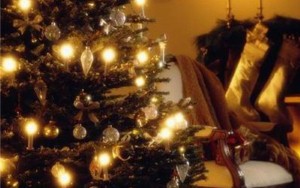How to decrease the risk of electrical fire over Christmas
This weekend has seen hundreds of thousands of Christmas trees being dragged into homes in order to be adorned with twinkling lights, much-loved decorations and reams of tinsel.
But with more electrical gadgets and appliances being switched on over the Christmas period, it is more likely that fires will start in people's houses.
The Electrical Contractors' Association has put together some guidelines to follow this winter in order to reduce the risk of electrical fires breaking out.
Giuliano Digilio, head of technical services at the organisation, advised checking through all Christmas lights for frayed leads or broken connectors before putting them up, as some lights may have been damaged in storage.
He also reminded homeowners not to overload plug sockets with Christmas lights as this can result in overheating, electric shocks, short-circuiting and potential fires.
"To cope with winter weather, exterior Christmas lights should either be low voltage - 12V or 24V - or protected by a Residual Current Device (RCD) that will automatically kick into action and break the circuit in the event of an earth fault." This could also make the fuse board trip.
"Cables should never be fed through doors or windows, as this could cause damage," he noted.
Similarly, leaving cables coiled on a reel, or failing to ensure all the tangles are out of those fairly lights, could cause them to overheat.
"But take care," Mr Digilio warned, "trailing wires and lighting leads are one of the most common causes of household trips and falls. Ensure that any cables or extension leads are not left across pathways, and cannot be easily grabbed by children and pets."
If you are plugging in your Christmas lights near the base of the tree, make sure there is no way the pot or bucket can trip over and drench your sockets in water, and when you are purchasing new lights, ensure they carry the European Standard CE mark and that they are the right voltage for your home.

